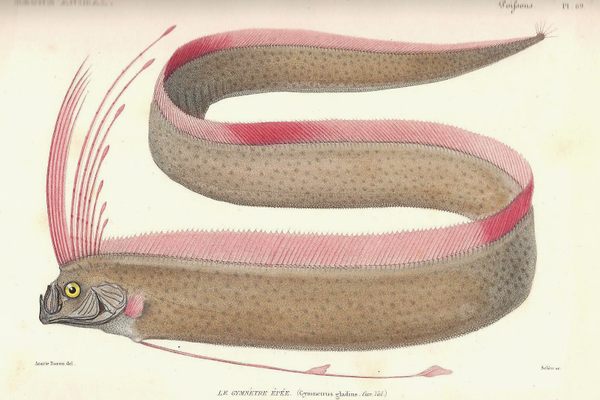It’s the 40th Anniversary of the Raccoon That Ate Japan
Four decades ago, a cartoon raccoon created an enduring ecological problem.

Four decades ago, a cartoon raccoon caused an ecological plague across Japan that continues today. But a legacy of invasive destruction hasn’t stopped Rascal the Raccoon from remaining an adorable anime icon.
First introduced in the 1963 book Rascal: A Memoir of a Better Era, the impish little trash-eater known as Rascal was a hit from the start. The book, a memoir of author Sterling North’s childhood, in which he adopted a baby raccoon for a year, was a hit with the youth of the era. It was quickly made into a live-action film by Disney, which depicted Sterling’s adventures with a comic playfulness that was not quite so apparent in the book. While both of these incarnations met with wide success, it was not until Rascal hit Japanese audiences that his star really rose—for better or worse.
In January 1977, the Nippon Animation Company released Rascal the Raccoon (Araiguma Rasukaru), a 52-episode anime cartoon series that returned the story to its more dramatic, bucolic roots. (And also featured early work by animation pioneer and Studio Ghibli cofounder Hayao Miyazaki!) The series aired all year long, and the ongoing adventures of Sterling and Rascal were a massive hit with Japanese children, who took to the story of a young boy and his ever-present animal sidekick, foreshadowing the popularity of franchises such as Pokémon, which took the country (and world) by storm decades later.

The show proved so popular that Japanese families began importing pet raccoons from North America at an alarming rate. For years after the cartoon’s 1977 release, at least 1,500 raccoons a month were hitting Japanese shores so that fans of the show could act out Sterling’s adventures. If only they had finished the book first.
As Sterling discovers at the end of his tale, raccoons are wild animals that make terrible pets. In the end, he is forced to release Rascal into the wild. Back in the real world, many new raccoon owners were learning the same difficult lesson. Their imported pets began getting into everything, becoming violent towards humans, damaging homes and property, and generally being, horrible five-fingered menaces. Taking a cue from their favorite show, many families simply released their raccoons into the wild. As resourceful garbage hounds, the newly introduced species had no trouble gaining a foothold on the Japanese mainland.
Eventually, the Japanese government banned importing the animals, but it was too late—the Curse of Rascal had taken hold. Today, they are seen as an invasive menace that destroys crops across the country, causing around $300,000 dollars a year in agro-destruction. They are also one of the leading causes of damage to historic temples. They steal fish and fruit from vendors, and worse, are beginning to push out native species.
Ironically, one of the species affected by the raccoon boom is the tanuki, Japan’s native species of “raccoon dog.” While they look alike, the two species are not closely related, but their comparable size means that they compete for many of the same wild resources. American raccoons have encroached on the tanuki’s turf.

Despite all of the problems caused since the Rascal boom of the 1970s, the aggressively cute cartoon version of the critter has remained a popular character in Japan, appearing on all sorts of merchandise, from cell phone cases to plush dolls. Rascal can also often be found getting mashed-up with more contemporary anime hits such as Attack on Titan.
In 2017, Nippon Animation opened a Rascal-based pop-up shop in the sprawling Toyko Solamachi shopping center to celebrate the 40th anniversary of the cartoon’s premiere, and the Tokyo Anime Center held an exhibition of art and artifacts from the cartoon. Rascal is still a cutie, but his impact on Japan’s ecosystems isn’t so adorable.
An earlier version of this article originally ran in August 29, 2014.
















Follow us on Twitter to get the latest on the world's hidden wonders.
Like us on Facebook to get the latest on the world's hidden wonders.
Follow us on Twitter Like us on Facebook